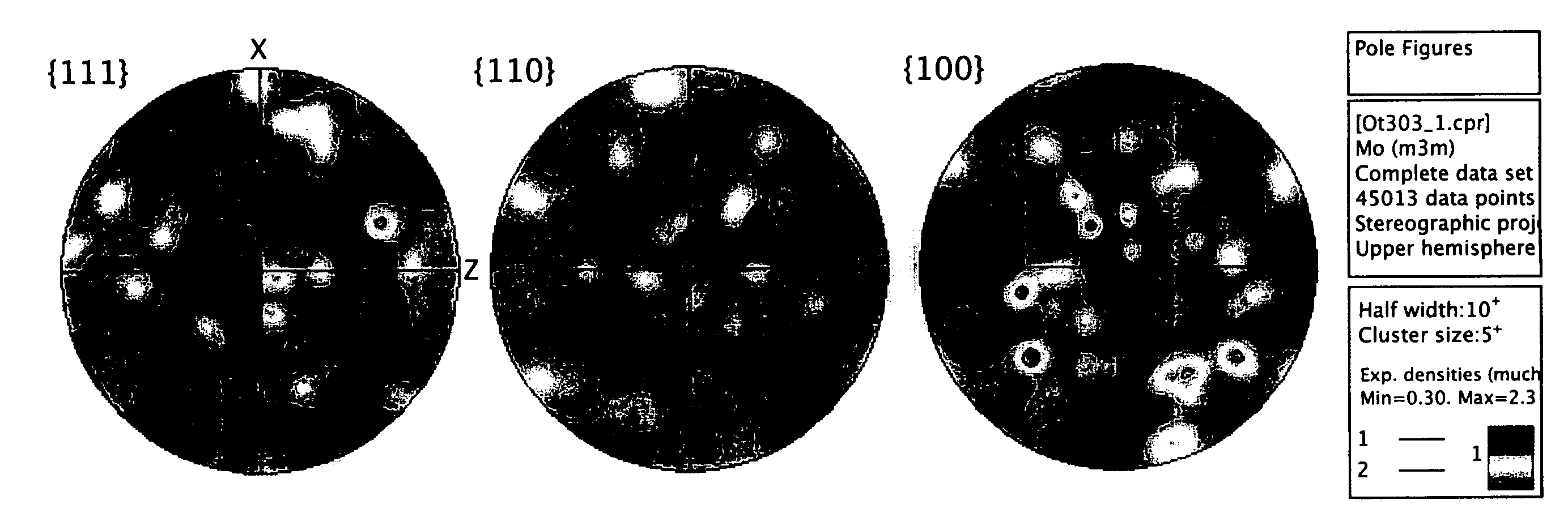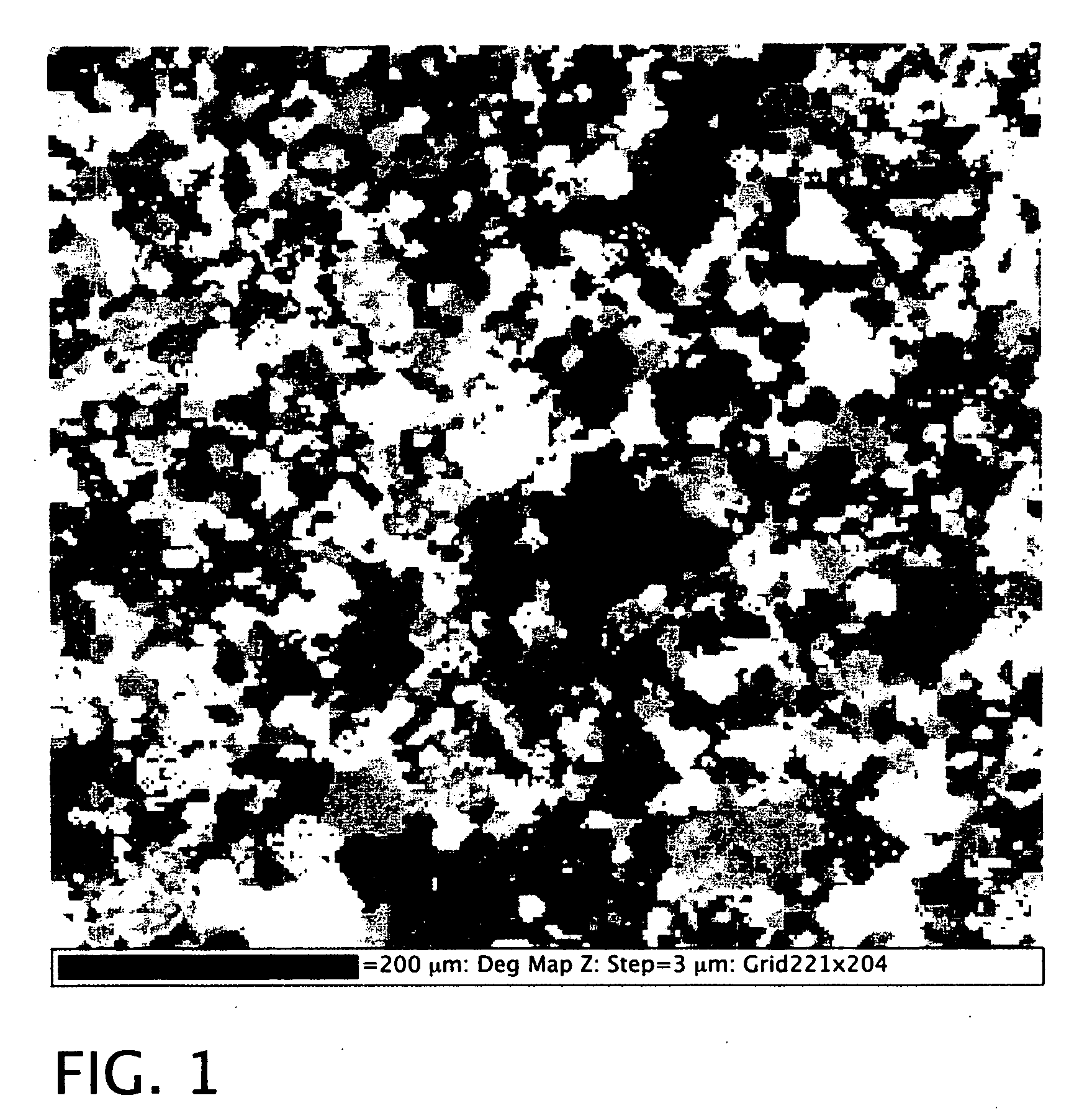High density refractory metals & alloys sputtering targets
a refractory metal and high density technology, applied in the direction of transportation and packaging, vacuum evaporation coating, coating, etc., can solve the problem that the sputtering technique has not been employed in the production of sputtering targets
- Summary
- Abstract
- Description
- Claims
- Application Information
AI Technical Summary
Benefits of technology
Problems solved by technology
Method used
Image
Examples
example 1
[0043]Molybdenum metal powder (MMP powder) is produced from ammonium di-molybdate (“ADM”) via a two stage process. The ADM is passed through a pusher boat where the ADM is hydrogen reduced to MoO2 powder. The second stage further hydrogen reduces the MoO2 to molybdenum powder with a pusher pan.
[0044]The powder was then “air-classified”. The “air classifier” levitates the powder in an air stream. As the powders collide in the air stream, they break up into smaller particles. The air pressure blows the smaller particles into a separate location from the larger size particles. Thus the air classifier fractionates the powders based on particle size and density. Commercially available classifiers are made by Hosokawa Alpine Division, and the air classifier model used to make the precursor powders of this example Alpine 400 MPV1.
[0045]The MMP powder with an average Fisher size of 3.9 microns was then cold isostatically pressed into a cylinder of 3 inches in length and a diameter of 2.65 i...
example 2
[0050]For a calcined metal powder (CMP powder), ADM is first passed through a rotary kiln reduction to MoO3, followed by hydrogen reduction to MoO2. The powder is then further reduced to molybdenum. The resultant powder is then air-classified in a manner similar to Example 1.
[0051]The CMP powder with an average Fisher size of 3.7 microns was then cold isostatically pressed into a cylinder of 3 inches in length and a diameter of 2.65 inches. The pressed cylinders were sintered at two different temperatures as described in Example 1.
[0052]Table 2 gives densities as a percentage of theoretical density (10.22 gm / cm3) for the two different sintering temperatures.
TABLE 2Sintering Temp.Density (% of Theo)3250° F.97.2%3800° F.98.2%
[0053]It is evident that both temperatures gave over 97% of the theoretical density.
example 3
[0054]In an embodiment of the invention, the plates have a texture that is free of texture banding and has random orientation, as characterized by Electron Beam Scattering Diffraction (EBSD).
[0055]“Texture” in the context of Materials Science means “crystallographic preferred orientation”. A sample in which these orientations are fully random is said to have no texture. If the crystallographic orientations are not random, but have some preferred orientation, then the sample has a weak, strong, or moderate texture. EBSD converts the difference of the amount of scattered electrons by focusing position into the difference of brightness of image. The EBSD gets orientation information of specimens by applying Kikuchi diffraction pattern that is formed when specimen is tilted about 70°.
[0056]A molybdenum sample was made by press / sinter at 3250° F. cycle (as described in Example 1) with MMP powder of Fisher size of 4 38 microns, resulting in 97% density plate. The sample was then character...
PUM
| Property | Measurement | Unit |
|---|---|---|
| pressure | aaaaa | aaaaa |
| temperature | aaaaa | aaaaa |
| temperature | aaaaa | aaaaa |
Abstract
Description
Claims
Application Information
 Login to View More
Login to View More - R&D
- Intellectual Property
- Life Sciences
- Materials
- Tech Scout
- Unparalleled Data Quality
- Higher Quality Content
- 60% Fewer Hallucinations
Browse by: Latest US Patents, China's latest patents, Technical Efficacy Thesaurus, Application Domain, Technology Topic, Popular Technical Reports.
© 2025 PatSnap. All rights reserved.Legal|Privacy policy|Modern Slavery Act Transparency Statement|Sitemap|About US| Contact US: help@patsnap.com



